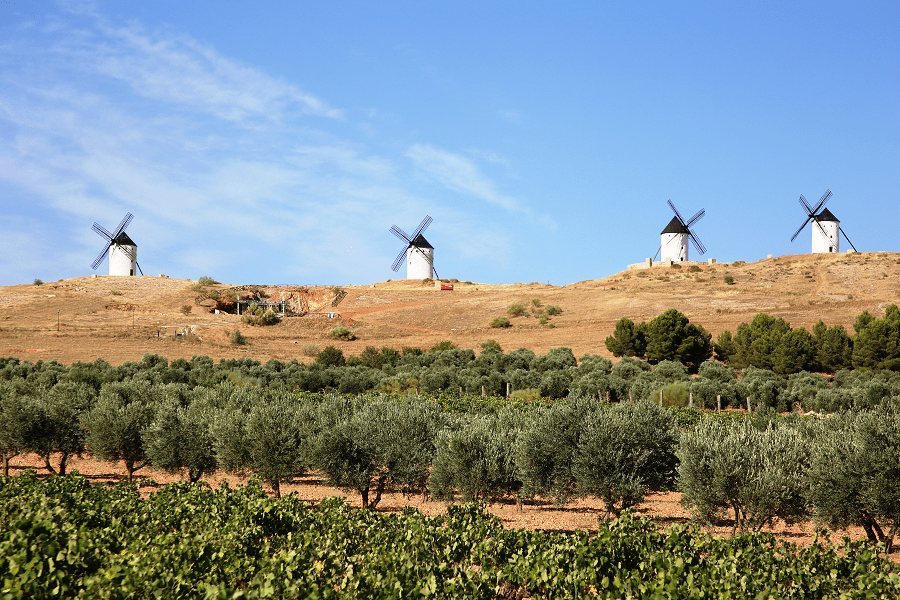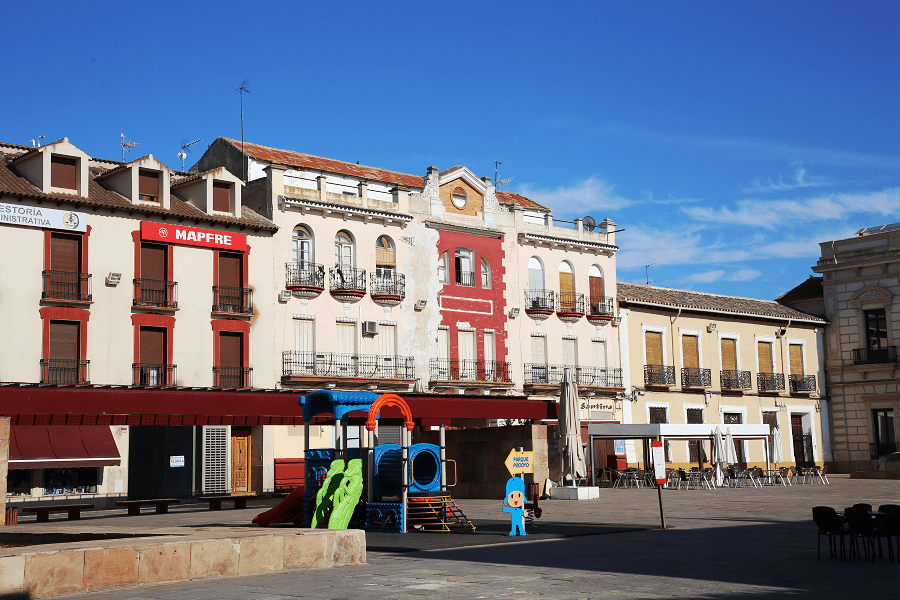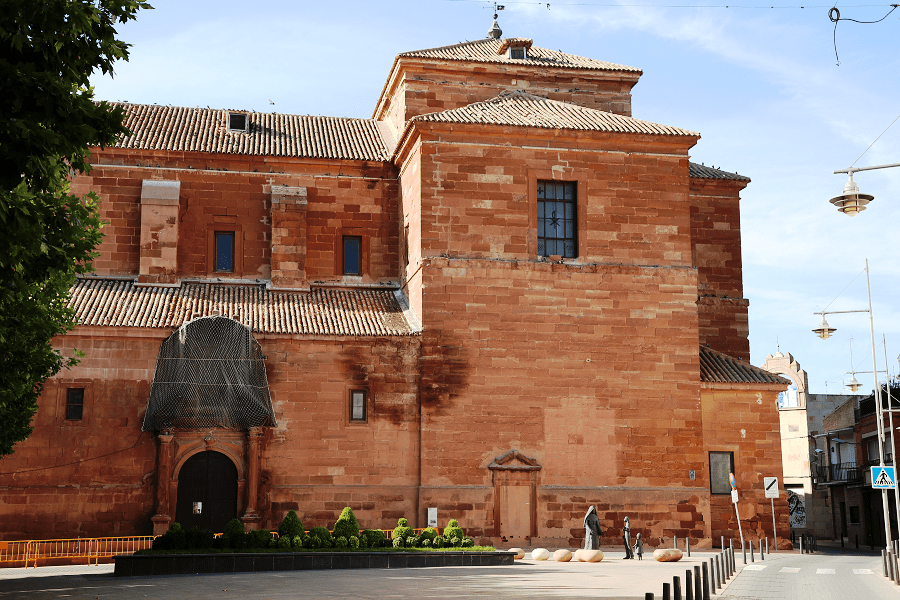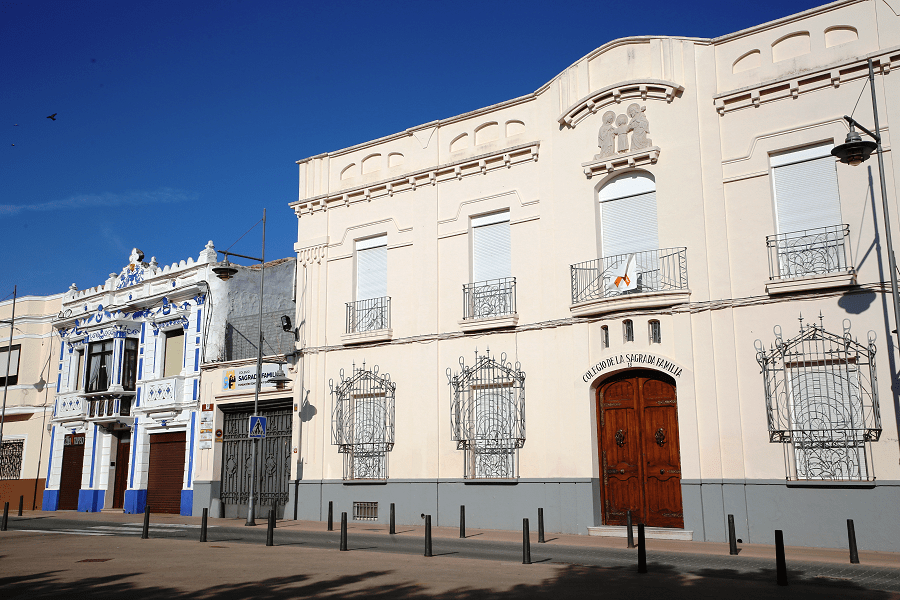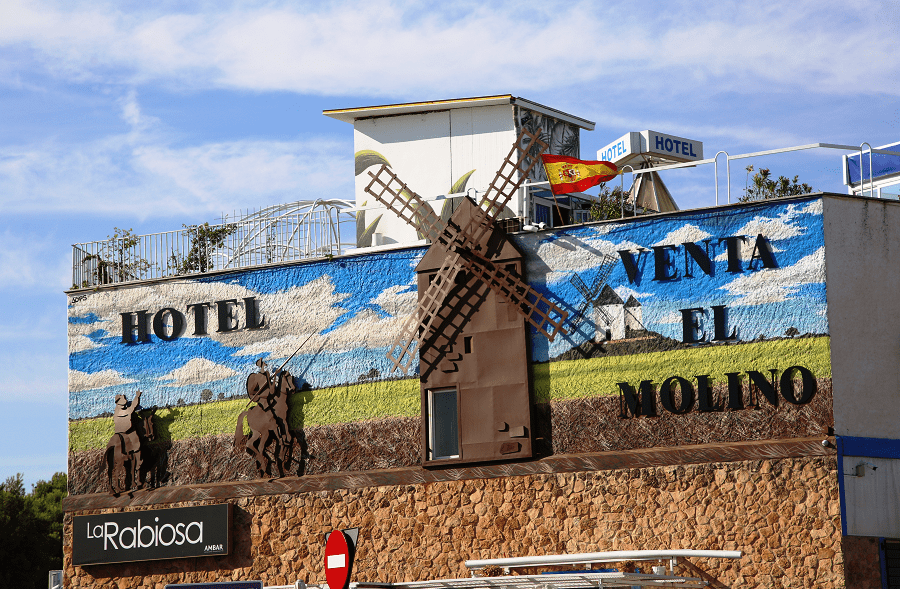Alcázar de San Juan is a municipality and city located in the northeast of the Ciudad Real province, in the autonomous community of Castilla-La Mancha (Spain).
Together with Consuegra and Campo de Criptana it has a large sample of the typical mills that Don Quixote fought against in Chapter VIII of Cervantes’s book.
Alcázar de San Juan is one of the most famous parts of the Don Quixote Route.
Main attractions
Windmills
Crowning the Cerro de San Antón as watchtowers, the windmills of Alcázar de San Juan (Rocinante, Fierabrás, Dulcinea and Barcelona) are nothing more than mechanical devices of great precision used to grind the grain and obtain the flour thanks to the use of the energy of nature: the wind.
The miller’s trade was hard and very temporary, it required great physical strength to carry the cereal and flour or move the stones when necessary, and it was carried out at very specific times of the year, mainly after the harvest, and only those days where the wind was conducive to grinding that could be several days in a row.
Today 4 of the 19 windmills and 2 water mills that the city once had are preserved. Two mills have been musealized. One as the Interpretation Center of the Manchego Landscape and the other houses a reconstruction of the original 16th century machinery that performs traditional grinding on various dates throughout the year.
The Cerro de San Antón has other unique works: the Cueva del Polvorín and the Quarries.
Palatial complex of the Grand Prior
In the surroundings of the Santa María neighborhood the most important vestiges of the medieval past of Alcázar are located. In 935 Alcázar (Qasr Banu Atiyya, in Arabic) was part of the Taifa of Toledo. After the conquest of La Mancha, the Christian kings granted lands and privileges to the Military Orders to take charge of the repopulation and Christianization of the border area. The old Arab citadel will be the embryo of the San Juan town. This city had a walled enclosure of which only the tower of the Grand Prior, the cubicle, the Palace Chapel and the Governor’s house remain.
The old Chapel of San Juan Bautista was built in the 16th century. Throughout history it has served as a jail, cemetery, museum and chapel. Currently it has an exhibition part on the old palace complex. From here you can also access the Roman archaeological sites.
El Cubillo two hypotheses tell us about this wall when we try to find out the origin of this unique building. On the one hand, a possible remainder of the old wall that surrounded Alcázar before the arrival of the Order of San Juan, and on the other, remains of the old palace of the Grand Prior of the Hospitallers of the Order of San Juan. According to this tradition, it could serve as the bell tower of the Church of Santa María.
It shows the remains of a semi-elliptical tower covered by a ribbed vault.
The Casa de Gobernación, could be the residence of the governor of the Priory of San Juan from the moment in which Alcázar assumed the capital of the Priory (18th century).
The Torreón de Don Juan José de Austria was built in 1284. It is an Almohad tower with a quadrangular plan with three heights accessed by a spiral staircase. It is part of what was the palace of the Grand Priors of Castilla y León of the Hospitaller Order of San Juan de Jerusalem, Rhodes and Malta.
Today it is a Museum Space dedicated to the Knights Hospitallers, and it tells the story of those knights who once inhabited and dominated this land.
The Museo del Hidalgo is located in an old 16th century manor house known as Casa del Rey. It represents the life style and realities which inspired Miguel de Cervantes when he created the character of Don Quixote de La Mancha.
The Museum has the exhibition of original pieces of great value, donated by important Spanish museums (Army Museum, National Museum of Decorative Arts, Santa Cruz Museum, among others)
It also has audiovisual, manipulative and interactive resources with which to experiment throughout the visit. This makes it especially attractive for family visits with children.
The visit is structured on two floors with different rooms on each of them.
How to get to?
Distances to the nearest cities:
From Madrid 1 hr 36 min (153 km) via A-4
From Toledo 59 min (101 km) via CM-42
From Ciudad Real 1 hr 7 min (103 km) via A-43 and CM-3107
From Guadalajara 1 hr 57 min (204 km) via A-4
Main information
Area: 666.7 sq. km (municipality)
Coordinates: 39°23′24″N 3°12′37″W
Population: 30 766
Languages: Spanish
Currency: Euro
Visa: Schengen
Time: Central European UTC +1



